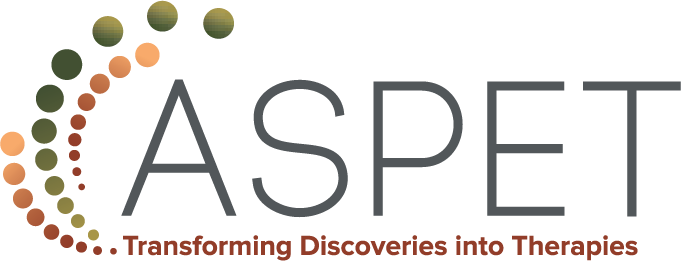Each year, participants of the ASPET Washington Fellows program culminate their experience with a policy brief detailing a topic of personal importance and presenting compelling arguments for policy improvements on that issue. Over the next few months, The Pharmacologist will highlight the policy briefs written by the 2024 Washington Fellows class. This month, we’re featuring policy briefs on equitable access to medical technologies in Alabama and federal legalization of fentanyl test strips in the U.S.
Ensuring Equitable Access to Emerging Medical Technologies in Alabama
By Santina Johnson, University of South Alabama
Executive Summary
 The state of Alabama is poised to transform its healthcare landscape through the adoption and integration of emerging medical technologies such as telehealth, digital health applications, and advanced therapeutics. Despite the promise these technologies hold, significant disparities in access persist, disproportionately affecting underserved populations. This brief details the current barriers to equitable access, reviews state initiatives such as the Alabama Broadband Accessibility Fund and recent legislative actions, and proposes comprehensive strategies to ensure that all Alabamians can benefit from technological advancements in healthcare.
The state of Alabama is poised to transform its healthcare landscape through the adoption and integration of emerging medical technologies such as telehealth, digital health applications, and advanced therapeutics. Despite the promise these technologies hold, significant disparities in access persist, disproportionately affecting underserved populations. This brief details the current barriers to equitable access, reviews state initiatives such as the Alabama Broadband Accessibility Fund and recent legislative actions, and proposes comprehensive strategies to ensure that all Alabamians can benefit from technological advancements in healthcare.
Introduction
In an era marked by rapid technological advancements, the potential to revolutionize healthcare delivery in Alabama through digital innovations is significant. However, the realization of this potential is hindered by existing disparities that limit access to these technologies for many residents, especially in rural and underserved communities. Addressing these disparities is crucial not only for improving health outcomes but also for ensuring the sustainability and resilience of the healthcare system statewide.
Context and Need for Action
Governor Kay Ivey’s administration has underscored the importance of broadband as foundational to the modernization of healthcare services, allocating nearly $150 million towards broadband expansion aimed at underserved areas. This commitment is part of a broader strategy to improve healthcare access and efficacy across the state, recognizing that high-speed internet is a prerequisite for effective telehealth services and the broader digital transformation of healthcare.
Understanding the Disparity in Access
The disparity in access to medical technologies in Alabama is driven by several interrelated factors:
- Economic Constraints: Many residents, particularly in rural areas, cannot afford the out-of-pocket costs associated with advanced medical technologies.
- Infrastructure Limitations: A significant portion of the state lacks the necessary broadband infrastructure, which is critical for accessing telehealth and digital health services.
- Digital Literacy Gaps: There is a widespread lack of digital skills necessary to utilize health technologies effectively, that is compounded by educational disparities.
- Cultural and Linguistic Barriers: Non-English speakers and minority communities often face challenges in accessing digital health services that are not tailored to their cultural or linguistic needs.
- Policy and Regulatory Barriers: There are gaps in legislation and policy that fail to support the widespread adoption and implementation of health technologies.
Legislative and Funding Initiatives
To combat these disparities, Alabama has implemented several key initiatives:
- Alabama Broadband Accessibility Fund: Established to improve internet access across the state, essential for enabling telehealth and other medical technologies.
- Recent Legislative Actions: In response to the COVID-19 pandemic and recognizing the ongoing need for improved healthcare delivery, the state government has moved to significantly expand funding for broadband, aiming to eliminate gaps in high-speed internet access.
Strategic Recommendations
- Enhance Broadband Infrastructure: Continue to build on the momentum generated by recent funding enhancements to ensure comprehensive broadband coverage, particularly targeting rural and underserved areas. Implementing this strategy involves not only laying down physical infrastructure but also adopting regulatory reforms that encourage investment in broadband networks.
- Subsidize Technology Adoption: Develop subsidy programs for low-income individuals and families to afford broadband and digital health services, reducing the economic barriers to access. These programs should be carefully designed to ensure they are accessible to those most in need and are sustainable over the long term.
- Educational Programs: Implement statewide digital literacy initiatives that specifically aim to increase the ability of all residents to utilize emerging health technologies effectively. These programs should include training tailored to different age groups and learning styles, ensuring widespread adoption and usability.
- Cultural and Linguistic Inclusivity: Mandate that all digital health programs and telehealth services accommodate a range of cultural and linguistic needs, ensuring equitable access and usability. This strategy requires active engagement with community leaders and cultural liaisons to design and implement programs that are culturally sensitive and appropriate.
- Policy Reform: Advocate for and develop policies that support the seamless integration of new technologies into existing healthcare frameworks, ensuring they enhance rather than hinder service delivery. This involves not only creating incentives for providers to adopt new technologies but also ensuring that regulatory frameworks are flexible enough to accommodate rapid technological changes without compromising patient safety or privacy.
Limitations and Challenges
While the strategies outlined offer a pathway toward more equitable healthcare, they also face several limitations:- Funding Constraints: Despite significant investments, the scale of infrastructure and educational programs needed may exceed current funding allocations. Future budgetary constraints could impact the sustainability of these initiatives.
- Technological Adaptation: The rapid pace of technological change means that infrastructure and training programs must continually evolve, which can be challenging to keep up with.
- Regulatory Hurdles: Overcoming bureaucratic inertia and regulatory complexities can slow down the implementation of necessary reforms.
Conclusion
For Alabama to fully realize the benefits of emerging medical technologies, a concerted effort involving robust legislative support, strategic funding allocations, and inclusive community engagement is essential. By addressing foundational issues such as broadband access and digital literacy, and ensuring that new technologies are accessible and equitable, Alabama can significantly enhance its healthcare outcomes and set a standard for integrating technology in ways that genuinely improve public health.
Bridging the Gap: STEM Professional Involvement in Evidence-based Policymaking
By Anh Phan, PhD, Icahn School of Medicine at Mount Sinai
Executive Summary



In the 2024 State of the State Address, Governor Hochul announced a set of policies aimed at improving quality of life, affordability, and healthcare access in New York State.1 To address these issues, policymakers need to embrace evidence-based approaches when making decisions. STEM professionals play an important role by providing advice and recommending evidence-based policies. While other states have successful fellowship programs that engage STEM experts in government advisory roles, New York State can enhance its policymaking by implementing the following strategies:
- Update current New York State fellowship programs to include more STEM professionals: Modify current New York State fellowship programs to include STEM professionals. By creating specialized tracks within these programs, New York State can attract more STEM talents.
- Establish a new State Science & Technology Policy Fellowship: Introduce a dedicated fellowship program designed for STEM graduates. This initiative will encourage STEM professionals to contribute their expertise to policymaking in New York.
By leveraging empirical evidence and tapping into the expertise of STEM professionals, New York can shape policies that prioritize the well-being of its constituents.
The Power of Data-driven Policies Informed Decision Making
Policymakers should base their decisions on empirical evidence. Data-driven policies are rooted in real world observations. Data analytics allow policymakers to anticipate trends and plan proactively. New York’s response to the COVID-19 pandemic exemplified the effectiveness of data-driven strategies, including vaccination campaigns and mask mandates. Furthermore, the Mayor’s Office of Data Analytics aggregates and analyzes data from various agencies, turning it into actionable solutions across the city.2 Additionally, the Criminal Justice Reform Act diverts low-level misdemeanors from criminal justice to civil court, with future evaluation in mind.3 Furthermore, initiatives like the Center for Innovation through Data Intelligence strengthen data-driven policies in NYC’s health and human services sector.4
Enhancing STEM Fellowships
Currently, New York State’s fellowship programs are open to all majors but tend to attract people with backgrounds in public policy or law. Although these programs offer competitive salaries and valuable experience, they don’t advertise much to STEM graduates. Because of this, many STEM professionals look to other states where they can apply for STEM-focused policy fellowships. To keep STEM talent in New York, New York should either adapt its current fellowship programs to include more STEM professionals or create a new New York State Science & Technology Policy Fellowship.
Option 1: Update current New York State fellowship programs to include more STEM professionals.
NYS has three government fellowship programs that can be modified to increase STEM graduate participation:
- Empire State Fellows Program: Create specialized STEM tracks within this fellowship. By doing so, State can provide a clear pathway for STEM professionals to contribute their expertise to government policymaking.5
- Excelsior Service Fellowship: Form a STEM advisory board to nominate PhD candidates from New York schools for this fellowship. This approach ensures that STEM talent is considered.6
- New York State Public Health Corps Fellowship Program: Establish a STEM internship track within this program. STEM graduates can apply their data analysis, technology, and engineering skills to address public health challenges.7
Existing fellowship frameworks help minimize overhead costs, as administration, training, and alumni networks are already established. However, adjustments may be necessary to accommodate more STEM professionals without compromising program balance and acceptance rates.
Option 2: Establish a new New York State Science & Technology Policy Fellowship.
This option involves creating a separate STEM fellowship program for New York State modeled after similar programs in other states, like New Jersey.8 This approach demonstrates a clear commitment to incorporating STEM expertise into policymaking. The program could take around two years to set up and will require both state and external funding. Although more expensive due to new infrastructure needs, it allows for a customized approach to integrating STEM talent into NYS governance.
Other states have successfully integrated STEM professionals into their policymaking processes through dedicated fellowship programs:
- California Council on Science and Technology (CCST) Science Fellows: This program places scientists directly in legislative offices, providing valuable scientific insights and helping to shape evidence-based policies.9
- Massachusetts Science & Technology Policy Fellowship: This program connects scientists and engineers with policymakers to contribute their expertise to legislative and executive branches.10
By adopting similar models, NYS can enhance its fellowship programs and ensure that STEM professionals play a crucial role in shaping state policies.
